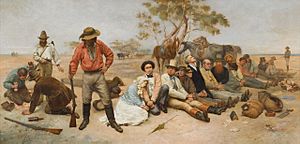Bushranger facts for kids
A bushranger was a thief who lived in the Australian countryside, also called the bush. Bushrangers often stole valuable things from banks or coaches. More than 2000 bushrangers lived in Australia's past. Most were simply criminals and thieves. However, a few became famous and were seen as heroes. They are like other famous figures such as Robin Hood in England or Jesse James in the United States.
Contents
History of Bushrangers
The word "bushranger" was first used in Australia in 1805. It described three men who stopped a cart near Sydney. Later, the word was used for criminals who attacked people on roads or in the bush.
The first bushrangers were convicts who had escaped. One of the last famous bushrangers was Ned Kelly, who was caught in 1880.
Early Bushrangers (1788 to 1840s)
Escaped criminals would steal from farms far away and from people traveling on roads. Sometimes they sold the stolen items to other free settlers.
John "Black" Caesar was one of the first bushrangers. He escaped from Sydney Cove many times. He was shot dead in 1796.
Bold Jack Donahue became known in newspapers around 1827. He robbed people on the road between Sydney and Windsor. By the 1830s, he was seen as the worst bushranger in the colony. Donahue led a gang of escaped criminals. He became an important part of Australian folklore as the Wild Colonial Boy.
Bushranging happened all over Australia. But Van Diemen's Land (now Tasmania) had the most violent bushrangers. Hundreds of criminals were free in the bush. Farms were left empty, and the army was called in to catch the bushrangers. Indigenous Australian bushranger Musquito led attacks on settlers.
Gold Rush Era (1850s)
Bushrangers were busiest during the Gold Rush years of the 1850s and 1860s. Gold was easy to carry and turn into cash. The goldfields were in faraway places. There were not many police to guard the gold.
George Melville was hanged in front of many people. He was punished for stealing from a gold escort near Castlemaine in 1853.
Later Bushrangers (1860s to 1870s)
The number of bushrangers grew in New South Wales. Many were young men born in the colony. They were often sons of poor, former convict farmers. They wanted a more exciting life than mining or farming.
Much of the bushranging in these years happened in the Lachlan Valley. This area was around Forbes, Yass, and Cowra.
Frank Gardiner, John Gilbert, and Ben Hall led the most famous gangs of this time. Other active bushrangers included Dan Morgan, who was active near the Murray River. Also, Captain Thunderbolt was killed outside Uralla, New South Wales.
End of an Era (1880s to 1900s)
It became harder for bushrangers to escape capture. More people settled in the land. The police became better at their job. Also, better train travel and communication, like the telegraphy, made it difficult for them to hide.
Among the last bushrangers was the Kelly Gang. This gang was led by Ned Kelly. They were captured at Glenrowan, Victoria in 1880. This was two years after they were declared outlaws.
In 1900, the Governor Brothers caused a lot of fear in northern New South Wales.
How People Saw Bushrangers
In Australia, people often felt some sympathy for bushrangers. Some bushrangers, especially Ned Kelly, said they were fighting against the government. Kelly is the most famous bushranger. How Australians feel about him shows that views on bushranging can be mixed.
Bushrangers' Lasting Impact
Bushrangers left their mark on the areas where they roamed. Many places in Australia are named after them. These include Brady's Lookout, Moondyne Cave, the town of Codrington, Mount Tennent, Thunderbolts Way, and Ward's Mistake. The areas of North East Victoria are even unofficially called Kelly Country.
Some bushrangers also influenced Australian literature. In 1818, Michael Howe dropped a book made of kangaroo skin and written in kangaroo blood. It contained his dreams and plans for a settlement in the bush. Francis MacNamara, also known as Frank the Poet, wrote some famous poems from the convict era. Several convict bushrangers also wrote their own life stories. These included Jackey Jackey, Martin Cash, and Owen Suffolk.
Bushrangers in Culture
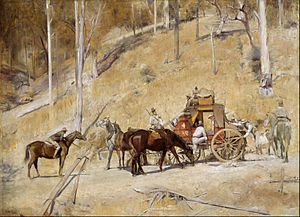
Jack Donahue was the first bushranger to inspire bush ballads. These included "Bold Jack Donahue" and "The Wild Colonial Boy". Ben Hall and his gang were also the subject of several ballads, like "Streets of Forbes".
Michael Howe inspired one of the earliest plays set in Tasmania. It was called Michael Howe: The Terror! of Van Diemen's Land. It first showed in London in 1821. Other early plays about bushrangers included The Bushrangers (1829) by David Burn.
In the late 1800s, writers like E. W. Hornung wrote popular bushranger novels. These stories often showed bushrangers as "noble bandits." Rolf Boldrewood's novel Robbery Under Arms is a classic of Australian writing. It was first published in a newspaper in 1882–83.
Bushrangers were a favorite subject for artists like S. T. Gill and William Strutt. Tom Roberts, a famous Australian painter, showed bushrangers in some of his paintings. These include In a corner on the Macintyre (1894) and Bailed Up (1895).
Bushrangers in Film
The Story of the Kelly Gang (1906) was not the first Australian film about bushrangers. However, it was the world's first feature-length story film. It set the standard for bushranger movies. Because it was so popular, its makers released other films. These included a 1907 film based on Boldrewood's Robbery Under Arms.
The popularity of these films led to many more being made. Dan Morgan (1911) is interesting because it showed its main character as a crazy villain, not a romantic hero. Films were also made about Ben Hall, Frank Gardiner, and Captain Starlight.
Governments worried that these films made outlaws seem too good. So, in 1912, they banned bushranger films. This ban stopped the booming Australian film industry. The ban was lifted in the 1940s. One of the few films to escape the ban was the 1920 movie of Robbery Under Arms. During this time, American films about bushrangers also appeared. These included The Bushranger (1928) and Stingaree (1934).
Later films about bushrangers include Ned Kelly (1970) starring Mick Jagger. Dennis Hopper played Dan Morgan in Mad Dog Morgan (1976). More recent bushranger films are Ned Kelly (2003) with Heath Ledger. Also, The Proposition (2005) and The Legend of Ben Hall (2016).
Notable Bushrangers
| Name | Lived | Area of activity | Portrait |
|---|---|---|---|
| Bluecap (alias of Robert Cotterell) | c. 1835–? | New South Wales | 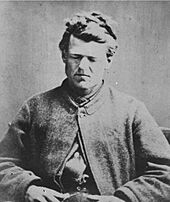 |
| Matthew Brady | 1799–1826 | Van Diemen's Land | 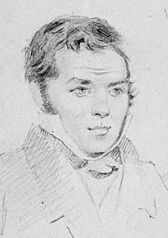 |
| Edward Broughton | 1803–1831 | Van Diemen's Land | |
| Mary Ann Bugg | 1834–1905 | Northern New South Wales | |
| Richard Burgess | 1829–1866 | New South Wales Victoria |
|
| Michael Burke | 1843–1863 | New South Wales | 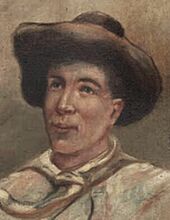 |
| Joe Byrne | 1857–1880 | North East Victoria | 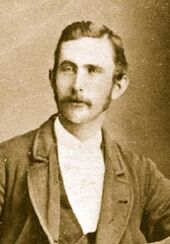 |
| John Caesar | 1764–1796 | Sydney area | |
| Captain Melville (alias of Frank McCallum) | c. 1823–1857 | Goldfields region of Victoria | |
| Captain Moonlite (alias of Andrew George Scott) | 1842–1880 | Victoria New South Wales |
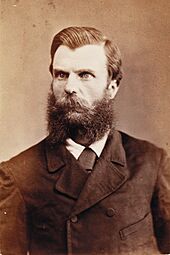 |
| Captain Starlight (alias of Frank Pearson) | 1837–1889 | New South Wales Queensland |
|
| Captain Thunderbolt (alias of Frederick Ward) | 1835–1870 | New South Wales | 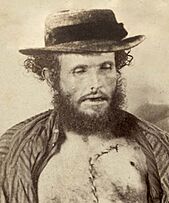 |
| Martin Cash | c. 1808–1877 | Van Diemen's Land | 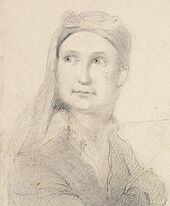 |
| Clarke brothers | 1840/1846–1867 | New South Wales | 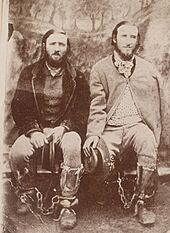 |
| George Clarke (alias "The Barber") | 1806–1835 | Liverpool Plains in New South Wales | |
| Patrick Daley | 1844–? | New South Wales | 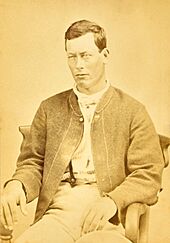 |
| Edward Davis | ?–1841 | Northern New South Wales | |
| Jack Donahue | c. 1806–1830 | Sydney area | |
| Jack the Rammer (alias of William Roberts) | ?–1834 | South Eastern New South Wales | |
| John Dunn | 1846–1866 | Western New South Wales | 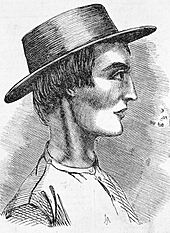 |
| Ralph Entwistle | c. 1805–1830 | New South Wales | |
| Joe Flick | c.1865–1889 | Gulf Country of Queensland | |
| John Francis | c. 1825–? | Goldfields region of Victoria | |
| Frank Gardiner | c. 1829–c. 1904 | Western New South Wales | 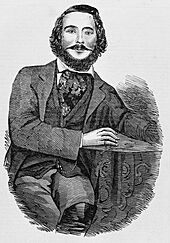 |
| John Gilbert | 1842–1865 | Western New South Wales | 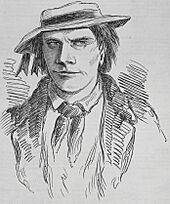 |
| Jimmy Governor | 1875–1901 | New South Wales | 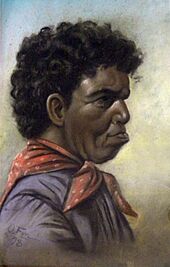 |
| Ben Hall | 1837–1865 | Western New South Wales |  |
| Steve Hart | 1859–1880 | North East Victoria | 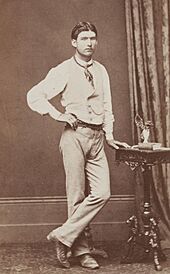 |
| Michael Howe | 1787–1818 | Van Diemen's Land | |
| Thomas Jeffrey | 1791–1826 | Van Diemen's Land | 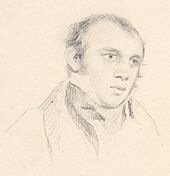 |
| George Jones | c. 1815–1844 | Van Diemen's Land | |
| Lawrence Kavenagh | c. 1805–1846 | Van Diemen's Land | 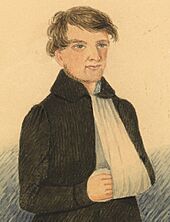 |
| Dan Kelly | c. 1861–1880 | North East Victoria |  |
| Ned Kelly | c. 1854–1880 | North East Victoria |  |
| Patrick Kenniff | 1865–1903 | Queensland | 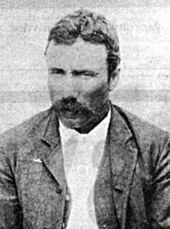 |
| John Kerney | c. 1844–1892 | South Australia | |
| Fred Lowry | 1836–1863 | New South Wales |  |
| John Lynch | 1813–1842 | New South Wales | |
| James McPherson | 1842–1895 | Queensland | 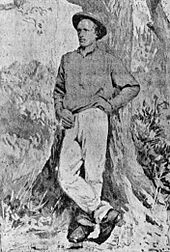 |
| Moondyne Joe (alias of Joseph Johns) | c. 1828–1900 | Western Australia | 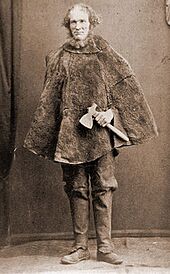 |
| Dan Morgan | c. 1830–1865 | New South Wales |  |
| Musquito | c. 1780–1825 | Van Diemen's Land | 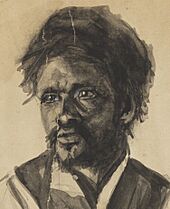 |
| James Nesbitt | 1858–1879 | New South Wales | |
| John O'Meally | 1841–1863 | New South Wales | |
| George Palmer | c. 1846–1869 | Queensland | 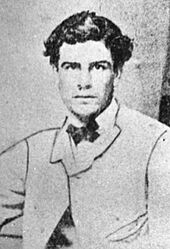 |
| Alexander Pearce | 1790–1824 | Van Diemen's Land |  |
| John Peisley | 1834–1862 | New South Wales | |
| Sam Poo | ?–1865 | New South Wales | |
| Harry Power | 1819–1891 | North East Victoria | 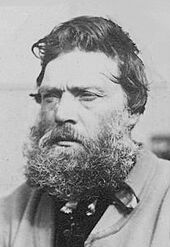 |
| Rocky (alias of John Whelan) | c. 1805–1855 | Van Diemen's Land | |
| Owen Suffolk | 1829–? | Victoria | |
| John Tennant | 1794–1837 | New South Wales | |
| John Vane | 1842–1906 | New South Wales | 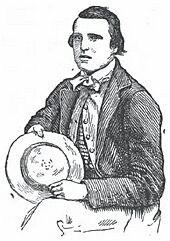 |
| Wild Toby | c. 1840–1883 | Queensland | |
| William Westwood | 1820–1846 | New South Wales Van Diemen's Land |
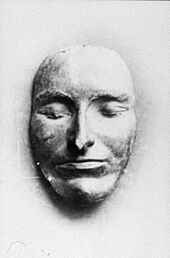 |
Images for kids
-
Convict artist Joseph Lycett's 1825 painting of the Nepean River shows a gang of bushrangers with guns.
-
Hundreds of onlookers watched as troopers fought Captain Moonlite's gang in 1879.
See also
 In Spanish: Bushranger para niños
In Spanish: Bushranger para niños


